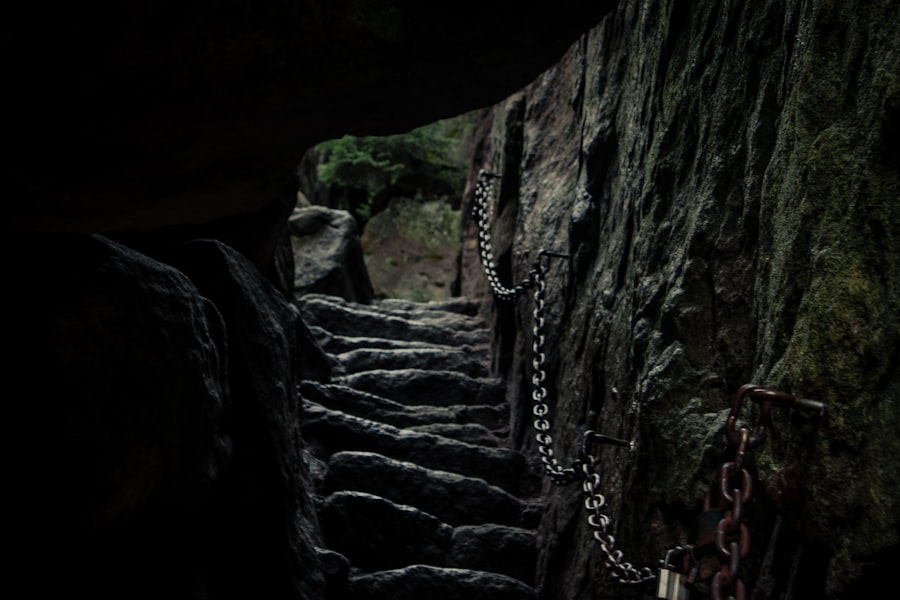The Drake Passage, a body of water located between the southern tip of South America and Antarctica, is renowned for its tumultuous seas and unpredictable weather patterns. Spanning approximately 600 miles, this passage is often regarded as one of the most challenging maritime routes in the world.
For those embarking on a journey through this formidable passage, understanding its characteristics is crucial for ensuring a safe and successful crossing. The passage is not only significant for its navigational challenges but also for its ecological importance. It serves as a vital corridor for marine life, including various species of whales, seals, and seabirds.
The nutrient-rich waters support a diverse ecosystem, making it a prime location for wildlife enthusiasts and researchers alike. As travelers prepare to cross the Drake Passage, they must appreciate both its natural beauty and its potential hazards, fostering a sense of respect for the environment they are about to enter.
Key Takeaways
- Drake Passage is a notoriously rough stretch of water between South America’s Cape Horn and the South Shetland Islands of Antarctica.
- When choosing a vessel for crossing the Drake Passage, consider factors such as size, stability, and experience of the crew.
- Packing essentials for Drake Passage include warm, waterproof clothing, sturdy footwear, and seasickness medication.
- Staying mentally prepared for the crossing involves managing expectations, staying informed about the journey, and practicing relaxation techniques.
- Safety briefings and protocols are crucial for understanding emergency procedures, life jacket usage, and evacuation plans.
Choosing the Right Vessel
Selecting the appropriate vessel for a journey across the Drake Passage is paramount to ensuring safety and comfort. Various types of ships are available, ranging from sturdy expedition vessels designed specifically for polar waters to larger cruise ships that offer more amenities but may not be as adept at handling rough seas. Travelers should consider their personal preferences, budget, and the level of adventure they seek when making this decision.
Expedition vessels often provide a more intimate experience, allowing passengers to engage closely with the crew and participate in guided excursions. In addition to size and amenities, the vessel’s construction and design play a critical role in its ability to navigate the Drake Passage. Ice-strengthened hulls and advanced stabilization systems can significantly enhance stability during turbulent conditions.
Travelers should inquire about the ship’s specifications and safety features, ensuring that it is equipped to handle the unpredictable nature of the passage. Ultimately, choosing the right vessel can make all the difference in creating a memorable and enjoyable experience while traversing this iconic waterway.
Packing Essentials for Drake Passage

When preparing for a journey across the Drake Passage, packing wisely is essential to ensure comfort and safety. The unpredictable weather conditions necessitate a well-thought-out selection of clothing and gear. Layering is key; travelers should pack moisture-wicking base layers, insulating mid-layers, and waterproof outer layers to protect against wind and rain.
Sturdy footwear is also crucial, as passengers may need to navigate wet decks or participate in land excursions on rocky terrain. In addition to clothing, travelers should consider bringing personal items that enhance their experience. Binoculars for wildlife watching, cameras for capturing breathtaking landscapes, and journals for documenting their journey can enrich their adventure.
It is also wise to pack essential medications, including seasickness remedies, as well as sunscreen and lip balm to protect against harsh sun exposure in polar regions. By carefully curating their packing list, travelers can ensure they are well-prepared for the challenges and wonders that await them in the Drake Passage.
Staying Mentally Prepared
| Metrics | Results |
|---|---|
| Number of meditation sessions per week | 5 |
| Hours of sleep per night | 7-8 |
| Days of physical exercise per week | 3 |
| Number of mindfulness activities practiced | 2 |
Crossing the Drake Passage can be as much a mental challenge as it is a physical one. The anticipation of rough seas can lead to anxiety for some travelers, making mental preparation an important aspect of the journey. Understanding that the passage is known for its unpredictable conditions can help set realistic expectations.
Travelers should remind themselves that many have successfully navigated these waters before them, often emerging with unforgettable memories and stories to share. Practicing mindfulness techniques can also be beneficial during this journey. Simple breathing exercises or visualization techniques can help calm nerves and foster a sense of tranquility amidst potential turbulence.
Engaging with fellow travelers can provide support and camaraderie, transforming anxiety into excitement as they share their experiences and expectations. By cultivating a positive mindset and embracing the adventure ahead, travelers can enhance their overall experience while crossing the Drake Passage.
Safety Briefings and Protocols
Before embarking on their journey through the Drake Passage, passengers will typically participate in safety briefings conducted by the crew. These briefings are essential for familiarizing travelers with safety protocols and emergency procedures specific to the vessel and the region. Crew members will explain how to use life jackets, emergency beacons, and other safety equipment, ensuring that everyone understands their role in maintaining safety during the crossing.
In addition to equipment training, passengers will learn about evacuation procedures and designated muster stations in case of an emergency. Understanding these protocols can significantly reduce panic during unforeseen situations, allowing travelers to respond calmly and effectively. The emphasis on safety not only prepares passengers for potential challenges but also fosters a sense of confidence as they embark on their adventure across one of the world’s most iconic maritime routes.
Managing Sea Sickness

Sea sickness is a common concern for many travelers crossing the Drake Passage due to its notorious rough waters. The combination of swaying motion and unpredictable waves can lead to discomfort for even those with strong sea legs. To mitigate this issue, it is advisable for travelers to take preventive measures before setting sail.
Over-the-counter medications such as antihistamines or prescription remedies can be effective in reducing symptoms if taken prior to departure. In addition to medication, adopting certain strategies during the crossing can help manage sea sickness. Staying hydrated by drinking plenty of water is crucial, as dehydration can exacerbate symptoms.
Eating light meals and avoiding heavy or greasy foods can also contribute to overall comfort. Finding a stable point on the ship—such as staying on deck or focusing on the horizon—can help alleviate feelings of nausea. By being proactive about managing sea sickness, travelers can enhance their enjoyment of the journey across the Drake Passage.
Adhering to Wildlife Guidelines
The Drake Passage is home to an array of wildlife, including majestic whales, playful seals, and numerous seabird species. For many travelers, observing these creatures in their natural habitat is one of the highlights of their journey. However, it is essential to adhere to wildlife guidelines established by conservation organizations and local authorities to ensure both personal safety and the protection of these animals.
Travelers should maintain a respectful distance from wildlife encounters, avoiding any actions that may disturb or harm animals in their natural environment. This includes refraining from feeding animals or attempting to touch them. Additionally, following guidelines regarding noise levels can help minimize stress on wildlife populations.
By practicing responsible wildlife viewing habits, travelers contribute to conservation efforts while enjoying unforgettable moments with nature.
Navigating Extreme Weather
The weather conditions in the Drake Passage can change rapidly, presenting challenges that require adaptability from travelers. Sudden storms or shifts in wind direction can create rough seas that may impact navigation and comfort levels on board. It is crucial for passengers to stay informed about weather forecasts provided by the crew throughout the journey.
Dressing appropriately for extreme weather conditions is vital for maintaining comfort during these fluctuations. Travelers should be prepared for cold temperatures, rain, and strong winds by wearing layers that can be adjusted as needed. Staying inside during particularly rough patches may be advisable; however, those who venture outside should do so with caution while adhering to safety protocols established by the crew.
By remaining vigilant and adaptable in response to changing weather conditions, travelers can navigate the challenges of crossing the Drake Passage more effectively.
Utilizing Safety Equipment
Safety equipment aboard vessels traversing the Drake Passage plays a critical role in ensuring passenger security during their journey. Life jackets are among the most essential items provided on board; passengers should familiarize themselves with their location and how to properly wear them during safety briefings. In addition to life jackets, other equipment such as lifeboats and emergency flares are vital components of maritime safety protocols.
Travelers should also take note of additional safety features available on board, such as communication devices that allow passengers to stay connected with crew members during emergencies or adverse conditions. Understanding how to use this equipment effectively can enhance overall safety while crossing the passage.
Emergency Protocols and Procedures
In any maritime journey, being prepared for emergencies is paramount, especially when navigating challenging waters like those found in the Drake Passage. Passengers should pay close attention during safety briefings regarding emergency protocols and procedures specific to their vessel. This includes understanding evacuation routes, muster stations, and how to respond in various emergency scenarios.
Familiarity with emergency procedures not only enhances individual safety but also fosters a sense of collective responsibility among passengers. In case of an emergency situation—be it severe weather or mechanical failure—knowing how to react calmly can make all the difference in ensuring everyone’s well-being. Crew members are trained professionals who will guide passengers through any crisis; however, being informed empowers travelers to contribute positively during challenging moments.
Post-Crossing Debriefing and Self-Care
After successfully crossing the Drake Passage, travelers often find themselves reflecting on their experiences during this remarkable journey. Participating in post-crossing debriefings organized by crew members allows passengers to share stories and insights gained throughout their adventure while fostering connections with fellow travelers. These discussions provide an opportunity for individuals to process their experiences collectively while celebrating their accomplishments.
Self-care following such an intense journey is equally important; travelers should take time to rest and recuperate after navigating challenging waters. Engaging in relaxing activities—such as journaling about their experiences or enjoying quiet moments in nature—can help individuals recharge mentally and emotionally after their adventure across one of the world’s most iconic maritime routes. By prioritizing self-care post-crossing, travelers can fully appreciate their journey through the Drake Passage while preparing for future adventures ahead.
If you’re planning a journey through the infamous Drake Passage, known for its turbulent waters and unpredictable weather, it’s essential to be well-prepared. An excellent resource to help you navigate this challenging part of the world is the article on MyGeoQuest, which provides valuable insights and tips for surviving the Drake Passage. You can find more information by visiting their website. This article covers everything from what to pack to how to handle seasickness, ensuring that your adventure is as safe and enjoyable as possible.
WATCH NOW! Drake Passage: Earth’s Deadliest Waters Revealed
FAQs
What is Drake Passage?
Drake Passage is the body of water between the southern tip of South America and the northern tip of the Antarctic Peninsula. It is known for its rough seas and challenging sailing conditions.
Why is Drake Passage so dangerous?
Drake Passage is known for its strong winds, large waves, and unpredictable weather patterns. These conditions make it one of the most challenging and dangerous stretches of water for sailors to navigate.
How can I survive Drake Passage?
To survive Drake Passage, it is important to be prepared for rough seas and extreme weather conditions. It is recommended to take seasickness medication, pack warm and waterproof clothing, and follow the instructions of experienced crew members.
What should I expect when crossing Drake Passage?
When crossing Drake Passage, passengers can expect rough seas, strong winds, and potentially stormy weather. It is common for the ship to experience significant motion, so it is important to be prepared for seasickness.
Are there any tips for surviving Drake Passage?
Some tips for surviving Drake Passage include staying well-hydrated, getting plenty of rest, and following the safety guidelines provided by the ship’s crew. It is also helpful to maintain a positive attitude and be flexible with plans, as weather conditions can impact the schedule.
